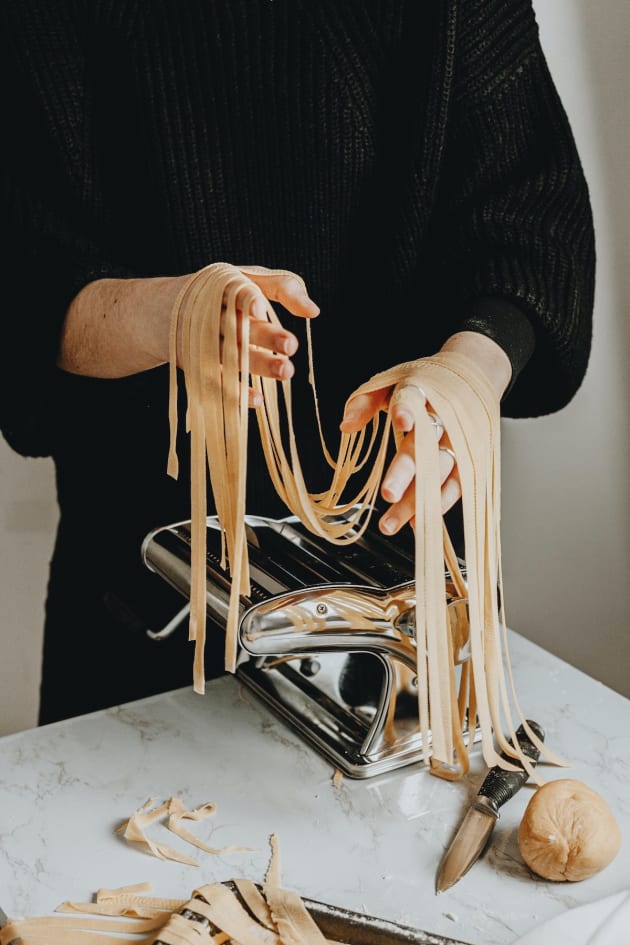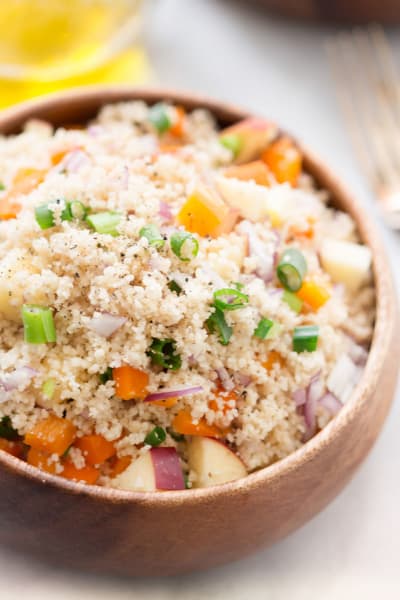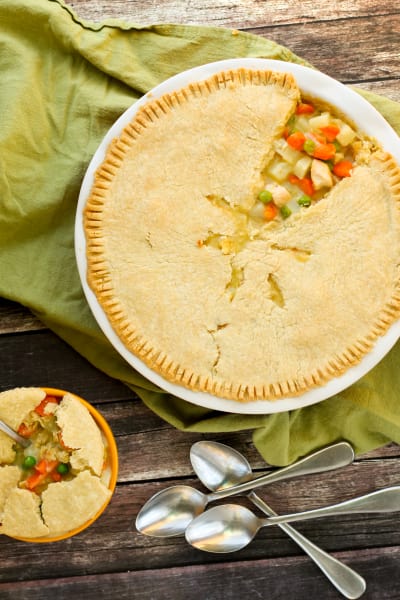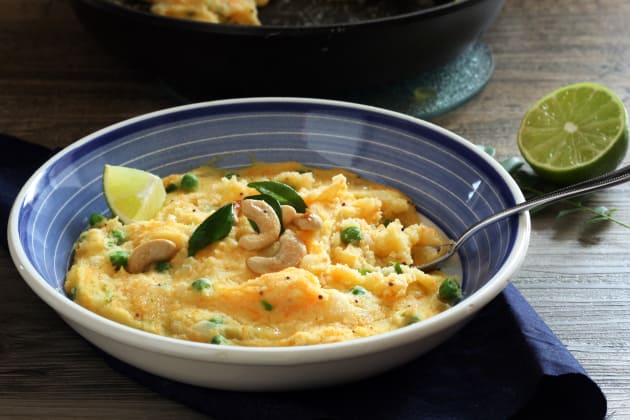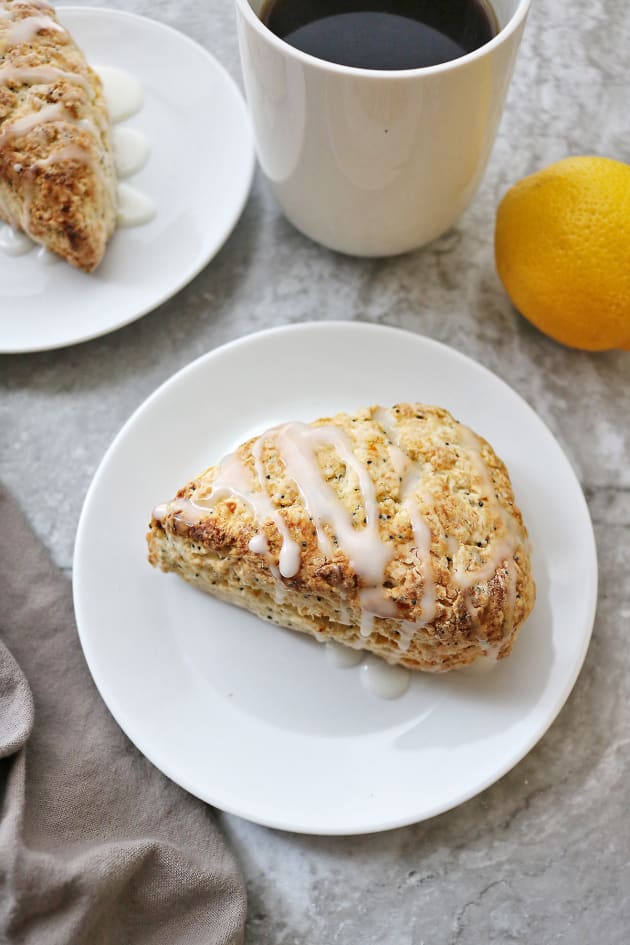Is Durum Wheat Semolina Gluten Free? What to Know
Nicole AustinEverything you want to know about semolina flour, explained.
Semolina is a popular flour that is found in many different foods you may already be eating on a regular basis, such as traditional pasta, couscous, bulgur, noodles, and many desserts and breads. But is durum wheat semolina gluten free?
There are so many kinds of flour on the market that it can be confusing or overwhelming to decide which ones are right for you and your family.
Many people make decisions based on what they are going to make with the flour, or what dietary restrictions they may have.
Gluten is a protein found in wheat, rye, and barley. Gluten is in many food products and even health and beauty products, making it particularly difficult to avoid.
A gluten allergy is called celiac disease; this is an autoimmune response to the consumption of or contact with gluten.
There are also people who have physical reactions when consuming gluten, despite being negative for celiac disease. This is called gluten sensitivity.
Allergic reactions to gluten (and a gluten sensitivity) can cause a wide range of undesirable symptoms, including:
- Diarrhea
- Abdominal pain
- Weight loss
- Bloating
- Poor appetite
- Itchy rash
Many people who do not have celiac disease, gluten intolerance, or gluten sensitivity also choose to follow a gluten-free diet. The reasons are varied — some feel it is healthier, while others report that they feel better or lose weight without it. Whatever the reason, it’s important to know what you can and cannot consume when avoiding gluten.
Why Are Gluten-Free Diets Popular?
As stated, many people make the decision to avoid gluten, even when it is not medically necessary. It is estimated that 20 to 30 percent of the US population is currently on, or has ever tried, a gluten free diet. Some of the reasons this dietary decision is so popular include:
- Reduced inflammation: People who avoid gluten to experience less physical symptoms often report a decreased incidence of inflammation.
- Testimonials: Many people trust the word of friends, family, or other influencers, including celebrities.
- Assumptions: The awareness that gluten is unsafe for some may encourage people to believe that it is potentially unsafe for them, too.
- Marketing: Now more than ever, the awareness of celiac disease and gluten sensitivity is rampant. Many companies advertise their products as gluten free, even if they always have been.
There’s no solid evidence that avoiding gluten will make a difference in the lives of average people who do not have a disease or sensitivity.
With that said, it’s important to pay attention to any sensitivities or symptoms that you may experience with certain foods. Elimination diets are usually a helpful way to determine if cutting something from your diet makes a difference, though it can take a few months to see any results.
As always, speak to your doctor before making any abrupt or major changes in your diet to make sure your plans are balanced and nutritious, and meet your specific needs.
Is Semolina Flour Gluten Free?
Semolina flour, the primary ingredient in a centuries-old famous recipe called semolina pudding, has been a major part of the diets of many people over time.
Semolina flour is an alternative to regular white flour that is derived from durum wheat. Durum wheat is one of the six different types of wheat commonly grown in the United States, which also includes hard red winter, hard red spring, soft red winter, soft white, and hard white.
Semolina is a coarse flour that is a favorite for use in pasta, breads, and couscous. Because it is derived from wheat, semolina is not gluten free. Sorry to disappoint!
Need a recipe without gluten? These are our favorite gluten-free pasta recipes.
Semolina Flour vs Bread Flour
When comparing semolina flour to other popular and similar flours, such as bread flour, we must take into consideration several factors.
How are semolina flour and bread flour similar?
These two flours are similar in many ways. Both flours contain a higher protein content than all-purpose flour.
Because of this more unique feature, bread flour and semolina flour are interchangeable in a recipe by a 1:1 ratio.
Bread flour and semolina flour are both high in gluten protein, setting them apart from softer, fluffier flour like all-purpose flour. Yet they are not technically the same thing.
How are semolina flour and bread flour different?
Despite similarities and the ability to exchange the flours at a 1:1 ratio, bread flour and semolina flour are different when it comes to what they do best. If you’re planning to make pasta, particularly if you plan to freeze or dry it, semolina cannot be matched.
Semolina maintains its shape over time, creating a more stable result. This is why it is often referred to as the macaroni flour.
The same unique characteristics that make semolina flour perfect for pasta also make it more challenging for lighter baking.
Bread flour holds up incredibly well during the breadmaking process as it responds well to what would otherwise be over-kneading or overheating, making it good for beginner and intermediate bakers. It’s great for producing all types of “normal” bread, or bread that we commonly use for multiple purposes, such as sandwiches, toast, sides, and more.
What flour should I use?
Semolina flour is a coarse, yellowish flour with a texture similar to cornmeal that is great for pasta, especially shaped pasta, and thicker, more dense recipes such as biscotti, baguettes, and milk breads. As you can see, it's an essential ingredient in many dishes and has a wide range of culinary uses.
Bread flour is a fluffier white flour often preferred for airier, chewy breads, such as English muffins, pizza dough, and pretzels. This is a contrast to all-purpose flour, which is used for cakes, muffins, pie crusts, biscuits, and more.
Tip: Start here if you need to make a gluten-free pie crust.
Both bread flour and semolina flour are less desirable for general baking because they are high in gluten protein, which keeps the product from expanding. This doesn’t mean it can’t be done, only that your results will be predictably different, and possibly undesirable.
Benefits of Semolina Flour
Semolina flour has a higher nutrient count than many other flours. There are health benefits that can be linked to the properties of semolina flour that you should not overlook when deciding whether or not to give it a try.
Weight loss
Semolina contains 13g of protein per 100g. A high protein diet is linked to weight loss because it helps people feel fuller longer (also called satiety), reduces orexigenic hormone secretion which lowers your appetite, and improves the body’s ability to maintain stable blood glucose levels. There are pros and cons to a high protein diet.
Semolina also contains fiber. A high-fiber diet has been linked to weight loss. Fiber does not break down in the body and remains undigested, which keeps you feeling full much longer.
Low glycemic value
The combination of the high gluten content and high fiber in semolina flour means that there is a slower release of sugar into the blood. This means it is much less taxing on the pancreas, which has to do far less work.
Easier to digest
While this is only true for those who do not experience sensitivities or allergies to gluten, durum wheat is considered easier to digest than bread. Durum wheat is a more primitive, simpler wheat genetically.
This places it in the category of “ancient grains,” which are still not safe for people who have celiac disease, but easier for the average person to process.
Vitamins and nutrients
Semolina contains several different vitamins and nutrients:
- Folate
- Iron and Magnesium
- Lutein
- Selenium
That can make this type of flour a particularly good idea for people with an iron deficiency or who are trying to reach their daily value of magnesium, lutein, etc. for various personal reasons.
These essential nutrients make durum wheat flour a popular choice for a range of traditional dishes as part of a healthy diet (among the various types of flour). But just remember, if you have a wheat allergy or need to make gluten-free products, you'll need to look for a semolina flour substitute, because this versatile ingredient is not gluten free.
What is the Healthiest Flour?
Good news: if you’re looking to improve your health by selecting healthier flours to bake with, look no further!
We’ve compiled a list of the 5 healthiest flours — including gluten-free alternatives in case you need them.
Coconut Flour
Coconut flour is grain and gluten free. Made from finely ground dried coconut meat, this flour is more calorie-dense than other flours and a good source of protein, fat, fiber, iron, and potassium.
Almond Flour
Almond flour is made by grounding blanched almonds into a fine powder, and is naturally gluten-free. Almond flour is not the same as almond meal — this is a coarser ingredient that involves grinding almonds with skin still intact.
Almond flour and wheat flour are generally interchangeable at 1:1 ratio in recipes. The nutty flavor works well in pancakes, cookies, scones, and biscuits.
Quinoa Flour
Quinoa flour is made from finely ground quinoa. It is an ancient grain that is gluten-free and contains all of its original nutrients due to low processing and refinement. Quinoa flour remains moist, for a tender baked good.
You would use half the amount of quinoa flour as wheat flour in a recipe. If you find this flour bitter, it can be toasted on a dry skillet over medium heat for 5-10 minutes. Stir gently before adding it to your recipe.
Quinoa flour performs great in muffins, pancakes, pie crusts, and pizza crusts. It’s a great solution for thickening sauces or soups as well.
Buckwheat Flour
Buckwheat flour is made from ground buckwheat. Despite the name, there is no wheat in buckwheat, which means it's great for making gluten-free foods.
Buckwheat is best mixed with other flours, forming a quarter to a half of the total amount used. It’s perfect in pancakes and quick bread, as well as a crumb coating.
Whole Wheat Flour
This is a flour used in most baked goods, as well as whole wheat pasta. It is considered healthier than white flour as it is made by grounding the entire wheat kernel, rather than removing the bran and germ. It does contain gluten, so it is not suitable for consumption by people with celiac disease or gluten sensitivity.
This flour can be used at a 1:1 ratio to white or all-purpose flour in any recipe. It is unrefined, therefore it is less fluffy.
This works great in homemade breads, muffins, cakes, cookies, pancakes, and waffles.
If you’re looking for a flour that works for you and your needs, be sure to check for nutrient content, what you will be using it for, and whether or not it is safe for you to eat. There are many options for flour in recipes and most can be used in conjunction with one another or separately.
Check for replacement ratios before modifying any recipes that contain flour, and have fun exploring! Also, be sure to try semolina and let us know what you think.
Ready to cook with semolina flour? Try our easy semolina pasta recipe, or this savory Indian semolina upma recipe!
Nicole is a self-published author of fiction novels, and a lover of food and spending time in the kitchen with her six children. She lives in coastal Maine where she loves exploring new recipes especially those that can save time, money and wow a crowd.
Tags: Semolina, FAQ, Baking, Pasta, Gluten Free, British


